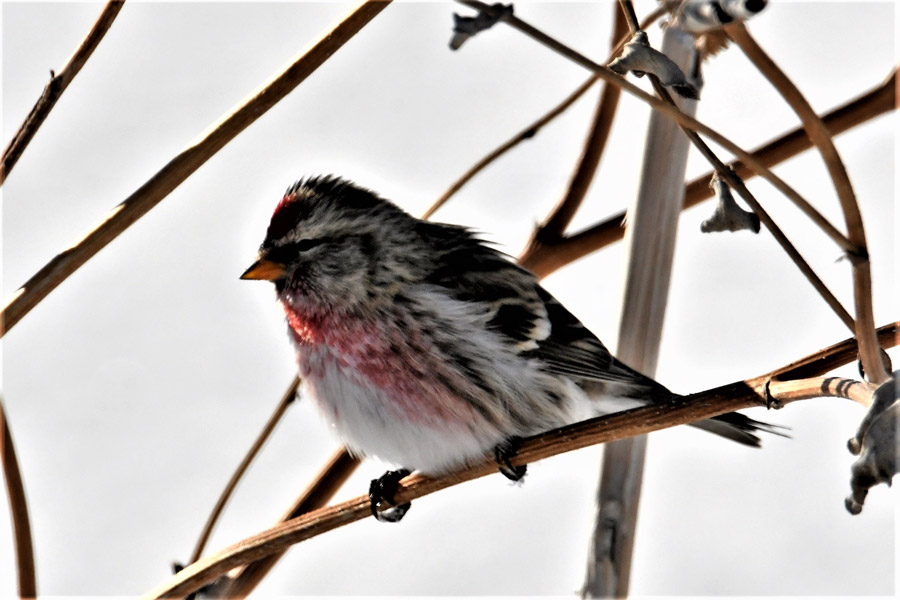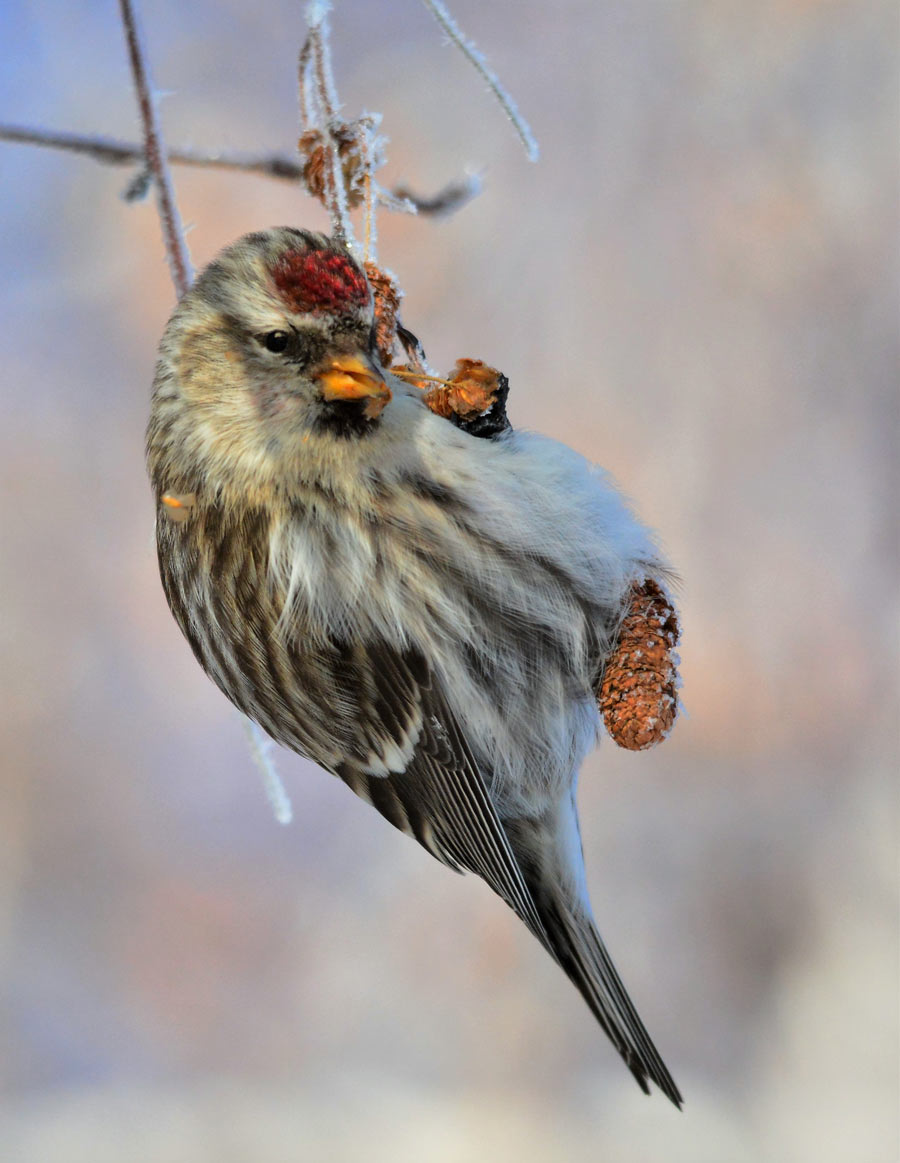Seeing a flock of Redpoll birds on the Rexburg bench was an unexpected sight
Published at | Updated at
Last week while looking for Horned Larks and Snow Buntings on the Rexburg Bench east of Rexburg, I noticed a flock of small birds flying from some wild sunflowers to pockets of weeds sticking out of the snow. One landed on a weed near my truck and I noticed the washed-out red-colored breast and the small red “skull cap” on the crown of its head.
Common redpoll, I thought to myself as I watched others gathering seeds from a nearby patch of dried wild sunflowers.
They were busy little characters and their constant chirping attracted other species including three larger House finches and even two Gray-crowned rosy-finches to them. Occasionally, one would find a seed-laden patch of weeds, then would communicate the abundant food source to the others and the social distancing was abandoned, resembling a Christmas dinner gathering.
Redpolls generally do not show up every year in the Upper Snake River Valley, but this is the second year in a row that I have seen them. I did not record them here in 2018 or 2019, but in December 2020, they showed up in large flocks and so far, they are hit-and-miss.
“We have seen small flocks of them show up in areas that have a lot of birch trees this year,” Darren Clark commented to me as we watched a flock of Horned Larks and a few Snow buntings near Walker Siding last week. “We haven’t seen large flocks, but their season is still early.”
With major storms predicted over the Christmas weekend, we may see a lot come in or the storms may push them farther to the south. Next Monday, the Rexburg Christmas Bird Count is planned and on Wednesday, the Howe CBC is also planned. Those two counts should reveal how strong the Redpoll migration is this season.
Redpolls are an “irruption” species that migrate only to find food. They nest in Alaska and northern Canada with an early winter migration to find their winter food source. As their food sources run out, they continue to migrate where they can find more abundant nourishment. The catkin seed pods on birch trees are their favorite, making cemeteries and parks with seed-laden birch trees popular for these birds. They often join American goldfinch to feed in large groups on these seeds.

One of my favorite spots to watch for them is Beaver Dick Park west of Rexburg. It has numerous birch trees that get enough sprinkled water during the summer to produce millions of catkins for them to feed on. But this year, I have only seen one small flock there while I have seen several flocks feeding on the dried wild sunflowers in the foothills east of Rexburg. As the snow deepens, the birds should become more visible when they move to birch trees.
This week I also had some more winter birds show up. I had one Brown creeper and two Red-breasted nuthatches show up at my feeders. A visit to the Burton Cemetery to visit a grandson’s grave allowed me to watch several creepers and nuthatches as they fed in the huge evergreens. It was a sweet moment alone with my thoughts and celebration.
I wish all of you a healthy and happy New Year. I am looking forward to the predicted bitter cold next week as it should freeze over Ririe Reservoir for some great kokanee fishing.
Living the Wild Life is brought to you by The Healing Sanctuary.


